OLD WERK, OLD FERRY
According to many elders, the Tra Bong River flowing through Binh Son District used to have a series of ferry piers. At that time, people mainly traveled on foot or by horse, but horses were a luxury, only officials and the rich could afford to buy them, so people living along the two banks of the Tra Bong River traveled and transported by water, which was the most convenient.
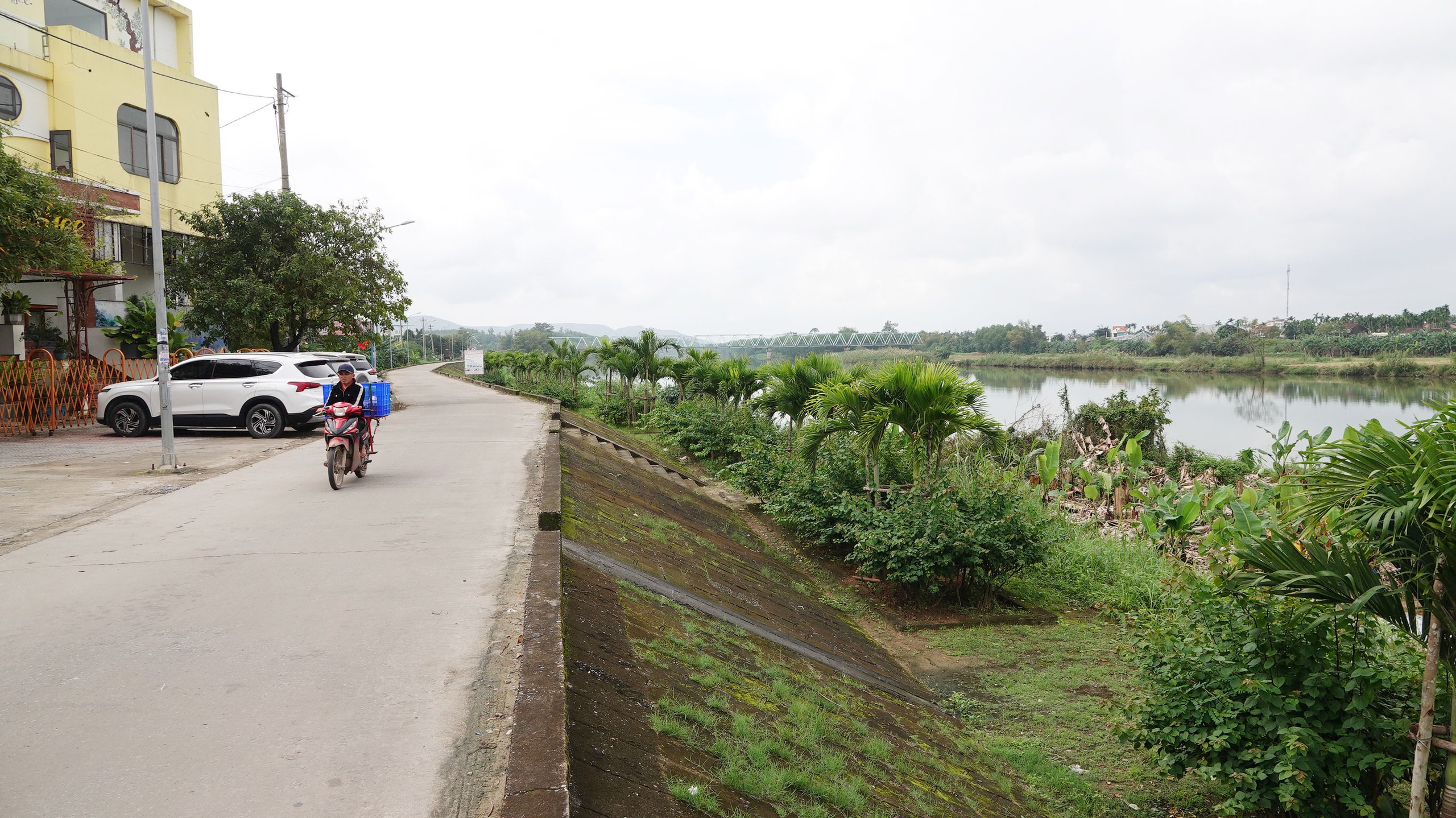
The western embankment of Tra Bong River (Chau O Town, Binh Son District, Quang Ngai ) is where the relics of Củi Wharf once stood.
The ferry terminals along this river are often named after people or associated with trade. Typically, the Tra Bong River section from Chau O Town to Binh My Commune (Binh Son District) has a series of ferry terminals: Thu Terminal, Truong Terminal, Dun Terminal, Củi Terminal, Thach An Terminal... Associated with these ferry terminals are often nearby markets.
According to Mr. Nguyen Toa (84 years old, in An Chau residential group, Chau O town), in the past, in An Chau village, there was a Thu wharf, which was the name of a person who lived next to the ferry. The wharf was always bustling with boats, including junks, coming here to buy and sell. From early morning, this wharf was crowded with people, partly people jostling to cross the river, partly boats buying and selling. The locals sold green tea, cakes, food and drinks, and agricultural products.
Nowadays, when transportation has developed, Thu wharf now only exists in the memories of the elderly. Some people believe that the old Thu wharf now has a bridge spanning from Binh Duong commune to Giao Thuy (Chau O town), so the ferry no longer exists. Similar to the fate of Thu wharf, a series of ferry piers along Tra Bong river have also faded over the years, then gradually forgotten.
Going up the Tra Bong River, we went to Binh My Commune (Binh Son District) to find Thach An ferry to go to Binh Minh Commune (Binh Son District). This ferry still exists but in a few years it will be a thing of the past, because there is a bridge across the Tra Bong River.
According to Mr. Phan Thanh Tuan, Secretary of the Party Committee of Binh My commune, next to Thach An ferry is Thach An market. In the book Du dia chi Quang Ngai , Thach An market has existed for the past 400 years. In the past, this market had a small corner that only sold betel, so many people called it Trau market. Mr. Tuan said that a cultural researcher once said that hundreds of years ago, Chinese merchant ships came to Thach An market to sell ceramics, fabrics... and bought sugar, cinnamon, betel and products from the upper Tra Bong region. According to that, in Binh My commune, there are currently the Lang and Dinh families... who are believed to be of Chinese origin, who came to trade and settle here.
ASSOCIATED WITH THE POTTERY VILLAGE My Thien
Ben Cui in Chau O Town used to exist for hundreds of years and was associated with the famous My Thien pottery village, but now there are no traces left. That place is now an embankment and houses close together.
Mr. Dinh Tan Tien (63 years old, in Chau O town) said that My Thien village used to have two hamlets: Gom hamlet and Cui hamlet. The hamlet name is associated with the profession. In Gom hamlet, most households make pottery (My Thien pottery), and Cui hamlet is the place that provides firewood to fire My Thien pottery.
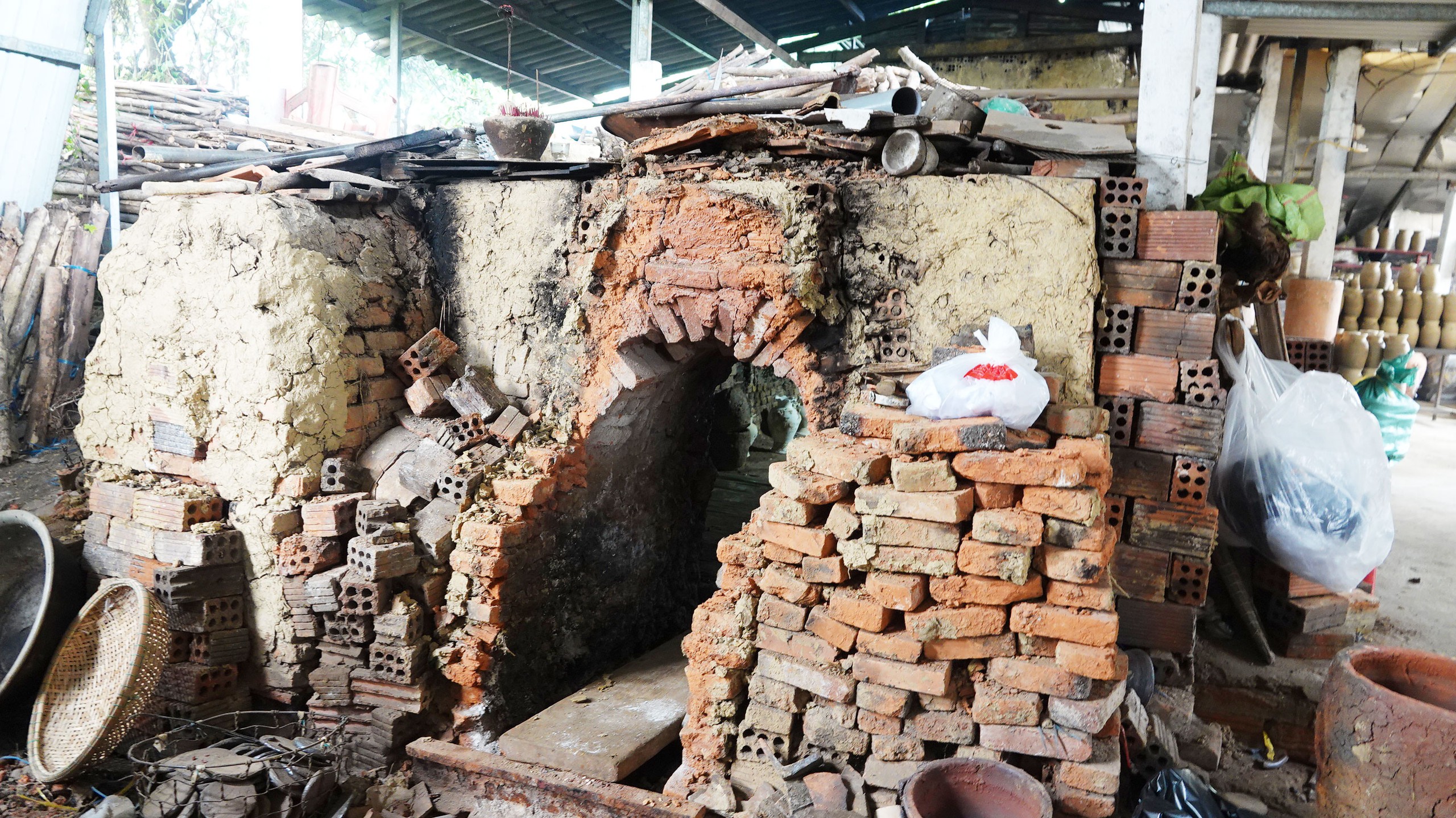
The remaining pottery kiln in My Thien pottery village
In the past, when there were no embankments, the riverbank was deep in Gom hamlet. From Tra Bong river to Gom hamlet, people dug a creek several dozen meters deep and dozens of meters wide. Later, after many floods, Tra Bong river silted up and eroded many times. The creek also gradually dried up and the riverbank receded further away from Gom hamlet. "Cui hamlet was an alluvial land by the river in the past. Later, people migrated to build houses. Cui hamlet was established after Gom hamlet", Mr. Tien said.
According to Mr. Tien, now, when people in Củi hamlet dig foundations to build houses, they still discover anchor ropes deep under the sand. This could be traces of ships anchored at Củi wharf in the past. The location of Hoa Mi Kindergarten today is the place where firewood was stacked to fire pottery in the past.
Mr. Pham Hau (94 years old, in My Thien village) said that in the past, My Thien pottery village was very bustling. The whole village focused on making pottery day and night to deliver goods to traders everywhere, and even to Chinese merchant ships. At that time, the Tra Bong river was deep, not as shallow as it is now. During the dry season, there were always dozens of junks ready to transport My Thien pottery. At that time, people still carried pottery after firing to the Tra Bong river bank for merchant ships, but the creek flowing into the river was the most convenient way to transport pottery to Củi wharf and then transport it onto merchant ships.
In 1982, My Thien pottery village established a cooperative and although it only worked for 6 months a year, it was very prosperous, even not enough to deliver to customers. Since about 1992, the pottery village's business has gradually failed. The main reason is the lack of clay and firewood. Up to now, in this village, only Mr. Dang Trinh (63 years old) and his wife still keep the fire of the profession to make a living.
Visiting Mr. Trinh’s pottery kiln, compared to 10 years ago, the couple’s production is busier. That is thanks to the information support from the locality. In addition, the skillful craftsmanship of Mr. Trinh and his wife has won over customers from near and far. When chatting, Mr. Trinh enthusiastically talked about Củi wharf, the old Pottery village, with a bit of nostalgia.
Now, life has changed, the whole village no longer has anyone following the traditional profession left by their ancestors, even Mr. Trinh's children do not choose the pottery profession. "The craft of shaping and shaping pottery is only passed down to women, but now I am the only one in the whole village who knows and does it. The danger of losing the pottery profession is too obvious," said Mrs. Pham Thi Cuc (Mr. Trinh's wife).
According to Dr. Doan Ngoc Khoi (researcher in Quang Ngai), merchant ships entering Sa Can port (Binh Son district) have traces from the Tang, Ming, and Qing dynasties. Their voyage was to stop at Sa Can sea to get fresh water and later to form a sea trade route to buy and sell Southeast Asian ceramics. At that time, Tra Bong river was deep, Chinese merchant ships docking at Củi wharf, Thach An wharf and Chau O market, Thach An market was a basis. ( continued )
Source link




![[Photo] Prime Minister Pham Minh Chinh chairs the Government's special meeting on law-making in May](https://vphoto.vietnam.vn/thumb/1200x675/vietnam/resource/IMAGE/2025/5/22/1c880aae96fd4e0894abc47a46fe19ba)
![[Photo] General Secretary To Lam chairs a working session with the Central Internal Affairs Commission](https://vphoto.vietnam.vn/thumb/1200x675/vietnam/resource/IMAGE/2025/5/22/3b7790f499da45b2803d8ae253207ef1)










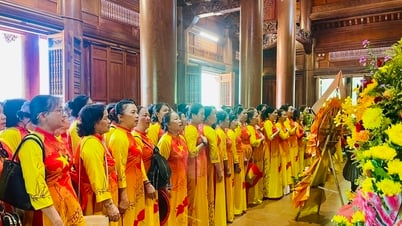









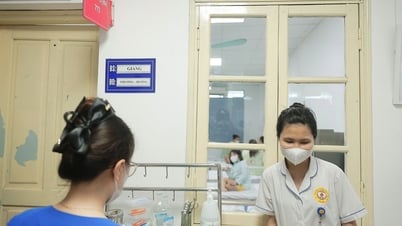





































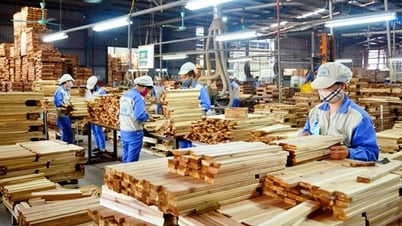






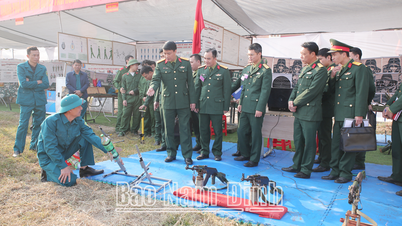





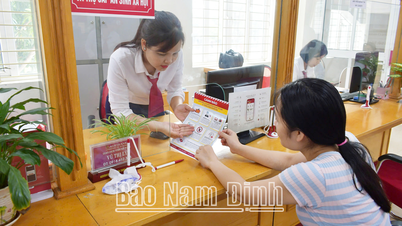
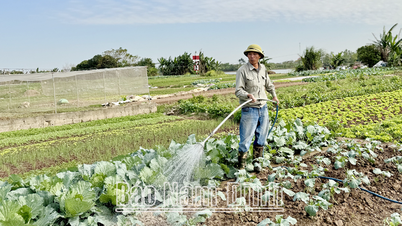
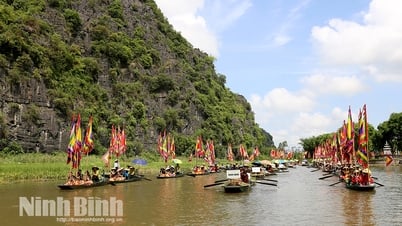



![[Podcast] Week introducing more than 500 OCOP products in Hanoi](https://vphoto.vietnam.vn/thumb/402x226/vietnam/resource/IMAGE/2025/5/22/d144aac2416744718388dbae3260e7fd)






Comment (0)